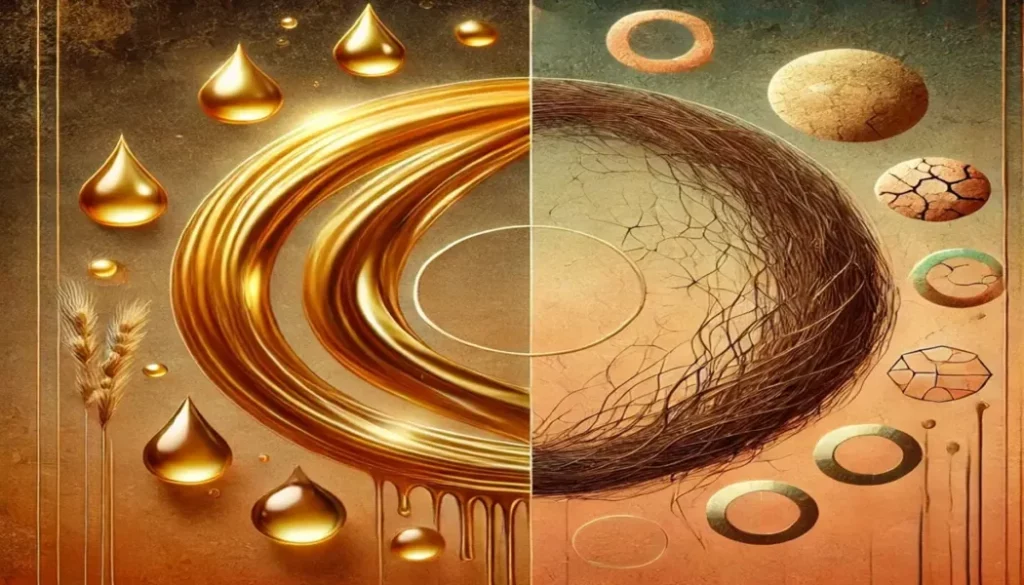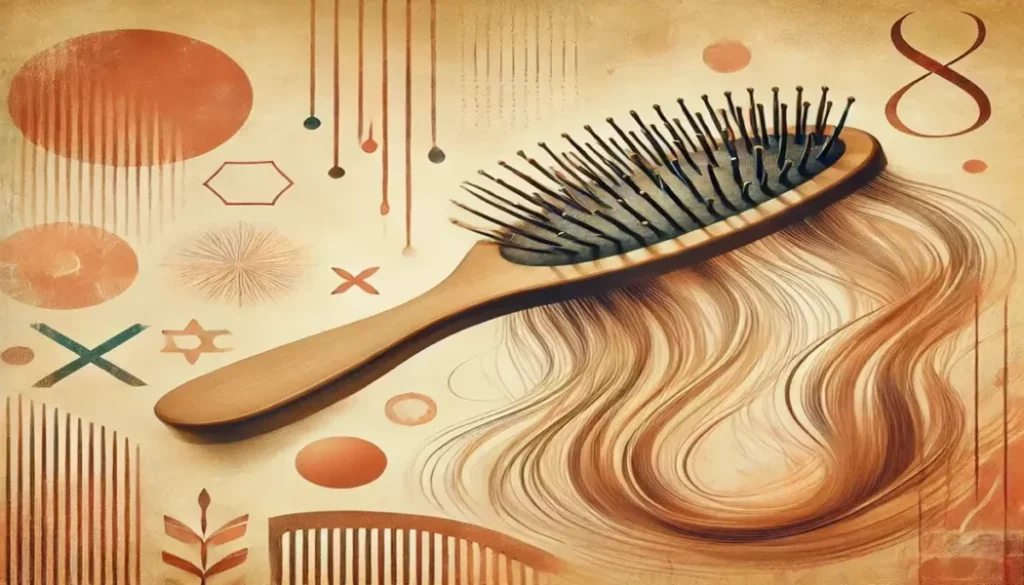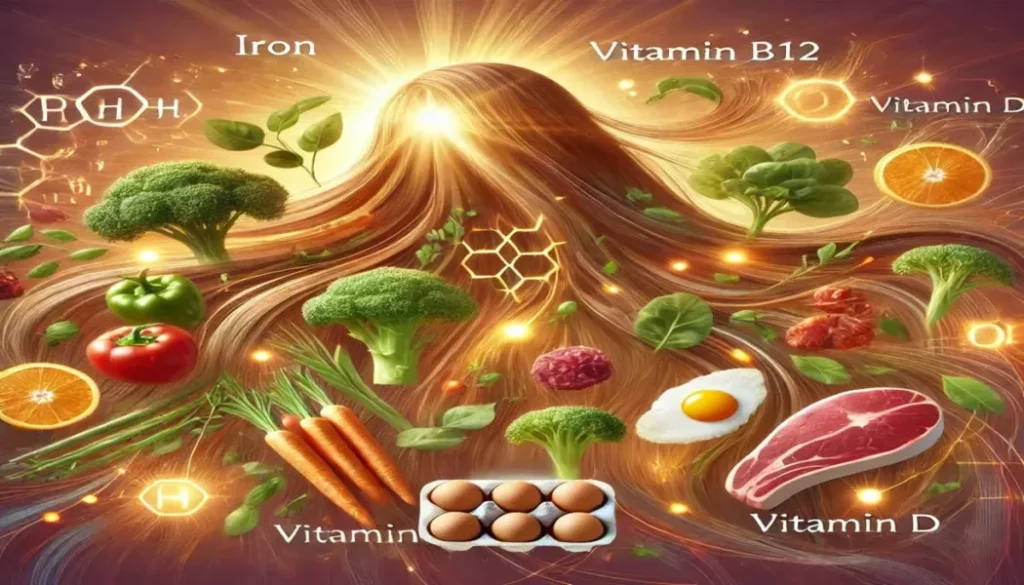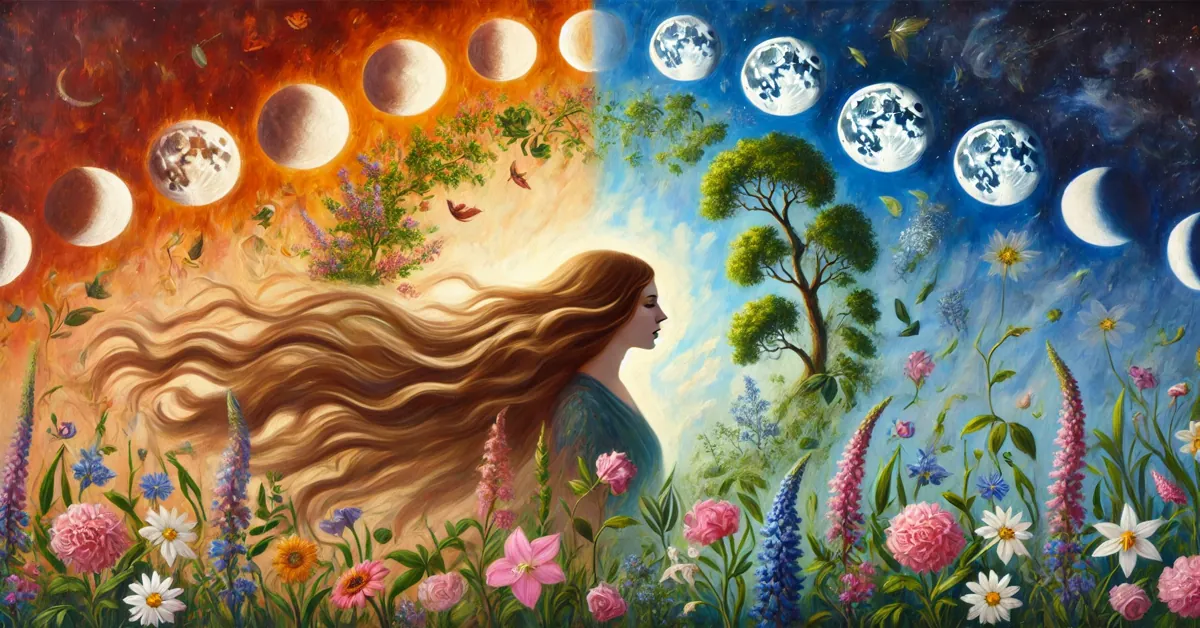Hormones have a quirky way of running the show in our bodies, and our hair isn’t an exception. When hormones take the lead, they affect hair health in quite a few surprising ways. Estrogen, progesterone, and testosterone are the main stars, each playing a unique role on your hair’s stage. Estrogen, the angelic hormone, generally supports hair growth and helps keep it lush and thick. It’s why hair might feel more full and beautiful during certain times in your cycle.
As the cycle unfolds, progesterone starts to act up, keeping things in check but also sometimes rivaling estrogen’s effects. It can lead to a little more hair fall here and there. This hormone’s influence is subtle yet significant enough that a shift in hair growth or texture might be noticed.

Then there’s testosterone. It can occasionally be like that mischievous cousin who decides to throw a wrench into the works. Higher levels of testosterone might control oil production and can sometimes be the culprit behind hair thinning or variations in hair texture. Testosterone levels can fluctuate quite a bit, especially pre-menstruation, influencing how hair behaves week by week. Noticing thicker and bouncier hair or suddenly tamer curls? You might have estrogen to thank in certain phases while battling frizz and oil means testosterone has something to say.
Understanding how these hormones dance around during the menstrual cycle offers great insights into why your hair suddenly feels different or manages to get flatter overnight. What’s happening internally has a huge say in those external hair vibes. It’s all about being aware of these changes and adjusting your hair care routine as needed for optimum hair health.
💧 Oiliness vs. Dryness: How the Cycle Impacts Scalp and Hair
Your hair starts to act like it’s got a mind of its own, flipping between greasy and desert-dry, and it’s not just your imagination. Understanding the link between your menstrual cycle and the condition of your scalp can be key to taming those hair woes. The secret weapon here: sebum, the natural oil your skin produces. It’s influenced by hormonal changes, especially during your cycle.
Certain phases of your menstrual cycle ramp up sebum production, giving you more oil than any hair conditioner ad might promise. Typically, just before your period, when testosterone hits its peak, your scalp may feel like an oil spill waiting to happen. That extra grease can be a hassle, leaving you wondering if you washed your hair recently without any sort of memory lapse!

As you progress from that oiliness, there’s a flip side. Estrogen levels drop, then rise again, which can cause drier days, especially as you head into or start menstruating. Suddenly, your luscious locks are thirsty and can feel like you’re walking around with a bale of hay atop your head.
To manage this rollercoaster, the trick is adjusting your hair care routine to cater to its current moods. For those oily, greasy days, reach for lighter, clarifying shampoos and products crafted to handle oil. Switching it up to hydrating conditioners and masks will help when your mane and scalp step into the dry zone.
Understanding when your hair cries out for a bit more moisture or a little less oil is just part of reading the hormone tea leaves. Tailoring hair care products to address these changes effectively manages your locks throughout your cycle, ensuring they look their best in all phases.
🌙 Navigating Hair Loss During the Menstrual Cycle
Finding more hair in your brush than usual? You’re not alone, and telogen effluvium might be the culprit. It’s like your hair took a backstage pass during production and suddenly decided it’s time to bow out. This type of temporary hair loss usually kicks in when there’s stress on your body, like hormonal changes during your cycle.
Telogen effluvium typically occurs after a hormonal shift, adding uninvited shedding to your plate. This happens because hormones push more hair follicles than usual into the resting, or telogen, phase. Luckily, this usually sorts itself out as the cycle progresses, but it’s nerve-wracking while it happens.

If what you’re experiencing feels like more than a temporary phase, keep an eye out for any patterns in hair loss that seem persistent or worsening across months. A good way to check is by looking at the bigger picture: think about your overall health and any significant life changes that could be playing a role too.
Identifying whether the shedding you’re experiencing is down to telogen effluvium or something else, like genetics, requires tweaking your perspective a bit. Knowing it’s generally temporary during cycles can bring some comfort. And remember, good hair hygiene, like minimizing stress and lean nourishing foods, is always step number one in getting those locks back on track.
🥦 Dietary Habits: Essential for Healthy Hair Through the Cycle
What you eat is like a backstage secret for how your hair looks and feels, tying in closely with how your body handles hormonal changes during your cycle. Let’s talk nutrients—iron, vitamin B12, and vitamin D are the key players when it comes to keeping hair looking its best.
Iron plays bass in this nutrient band, crucial for ensuring your follicles get enough oxygen. It supports hair growth, especially when those hormone shifts make hair seem less full. If you find yourself dragging into the next episode with a side of hair loss, check your iron intake.
Vitamin B12 acts as the energy technician. It works to produce red blood cells in your system, delivering oxygen all around, helping hair stay strong and less brittle. Without enough B12, hair can feel weaker, and shedding might start picking up pace.

And then there’s vitamin D, not just for your bones but also for stimulating hair follicle growth. It’s like that unexpected cameo that steals the show.
Balancing these nutrients helps keep your hair healthy and minimize any losses you might face when hormones shake things up.
To give your hair the best support during your cycle, prioritize foods rich in these nutrients. Lean meats, leafy greens, eggs, fortified cereals, and a regular flex with some sunlight can do wonders.
If hair health feels like it’s stuck in reruns despite dietary changes, it might be time to chat with a professional about any possible deficiencies.
🧴 Optimizing Hair Care Products and Styling Techniques
Choosing the best hair care products involves a bit of matchmaking, especially when your menstrual cycle plays a part in altering your hair’s needs. During those oily hair episodes, a lightweight, clarifying shampoo becomes your trusty sidekick, helping to manage excess oil without stripping your hair dry. Meanwhile, during dry spells, a rich, hydrating conditioner steps up to the plate, giving your hair the moisture it’s begging for.
For stronger, shinier hair, integrating masks and serums is like adding a power-up to your routine. These products offer deep nourishment, which your hair appreciates, especially when hormonal changes leave it vulnerable. Look for ingredients like keratin, biotin, or argan oil when your hair needs an extra boost during drier cycle stages.

Styling also deserves some attention. On those greasy days, airy, loose styles can help keep the extra oil under wraps. A top bun or a loose braid might be just what you need to navigate a busy day without worrying about flyaways or oily roots.
During drier times, try styles that keep moisture in, like tight braids or slicked-back looks. These can help protect your hair against environmental damage and preserve its health.
Being mindful of your cycle allows you to time your beauty routine effectively. You’ll not only keep your hair looking rad but also ensure it’s healthy, split-free, and ready to stand up to whatever your hormones have in store.
Stay with us — the best is yet to come.
By following our advice, you’re doing the most you can for your hair.
Be the first to know when we publish new guides, tests, and proven strategies for stronger, healthier hair.
👉 Visit the About Me page to learn more about my journey, mission, and why helping people with hair health is so personal to me.
Want healthier, stronger hair? Discover 8 science-backed habits that protect your scalp and boost natural growth. Get your free PDF guide today!
Disclaimer: This article is for informational purposes only and is not a substitute for professional medical advice. Sensitive claims are supported with scientific references, and full product details can always be found on the official websites of the respective manufacturers or distributors.
Some links in this article are affiliate links. If you choose to make a purchase through them, I may earn a small commission at no extra cost to you — helping me keep HairGrowGenius running. Thank you for your support!

✅ FAQ – How the Menstrual Cycle Affects Hair Health and Beauty
❓ Why does hair sometimes look oilier during certain phases of the menstrual cycle?
In the days leading up to menstruation, rising progesterone levels can increase sebum production, making hair appear greasier than usual. This is a natural response, not a hygiene issue, and usually resolves as hormone levels rebalance.
❓ Can menstruation cause temporary hair shedding?
Yes, a dip in estrogen and iron levels during menstruation can trigger short-term shedding in some women. It’s usually mild and temporary, but if the shedding is persistent or heavy, iron deficiency or hormonal imbalance should be evaluated.
❓ Are there specific hair products better suited for different phases of the menstrual cycle?
Absolutely. During the oily phase, lightweight shampoos with clarifying ingredients like rosemary or tea tree oil help control sebum. In the drier phases, moisturizing masks and serums can replenish hydration. Tailoring your routine to your cycle can improve both scalp health and styling results.
❓ Does PMS or period-related stress affect hair appearance?
Yes. Hormonal fluctuations can increase cortisol levels, leading to inflammation or a dull, lifeless look. Managing stress through rest, adaptogens, and gentle scalp massage can support hair health during this time.
Last updated: June 2025 based on latest research


Leave a Reply